Your company has worked for months on a new software product. It’s fantastic, complex and full of excellent features.
There’s only one problem—now you need to teach your customers how to use it to its full potential.
Clear, comprehensive, and user-friendly documentation is an excellent way to do that.
Creating it is a challenging task, but it’s also a must if you want to give your users the best possible experience.
In this article, we’ll dive deeply into the software end user documentation and show you why you need to have it and how to go about creating it.
What Is Software End User Documentation
Software end user documentation is a term you’ve most likely encountered many times. But what exactly is it?
To answer that question, let’s take a look at some definitions of end user documentation, also known simply as user documentation, and see what it entails.
According to Brayn Wills, a knowledge management specialist, it’s a resource about your product intended for customers.
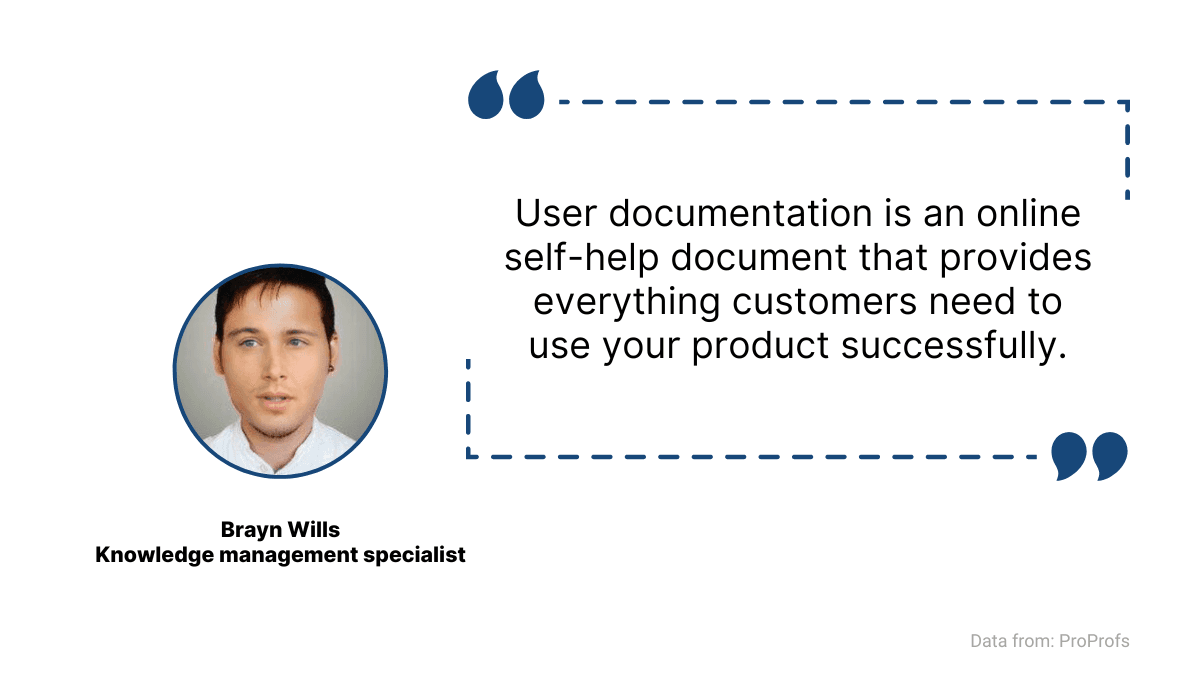
Source: Archbee.com
In other words, it contains information about the product or services your customers can access and use for their needs.
So, when we talk about software end user documentation, we refer to the resources that guide the customer through navigating the software.
That can include documentation about installing the software, using its features, solving issues, etc. In short, everything a software user needs to know to use it successfully.
It can also come in various forms. There are many categorizations, depending on how granular you want to go, but in general, Adelina Karpenkova from Scribe breaks it down as follows:
- Onboarding guides
- User manuals
- Troubleshooting guides
In the following sections, we’ll go into more detail on those types of software end user documentation. For now, let’s look at one example of such a resource. Here are some examples of great SaaS end user documentation to learn from.
Zoom, a popular communications platform, has stellar user documentation that includes all three categories mentioned above.
Their onboarding guide has everything a user needs to start using their software, like the information about installation and updating, as well as system requirements.
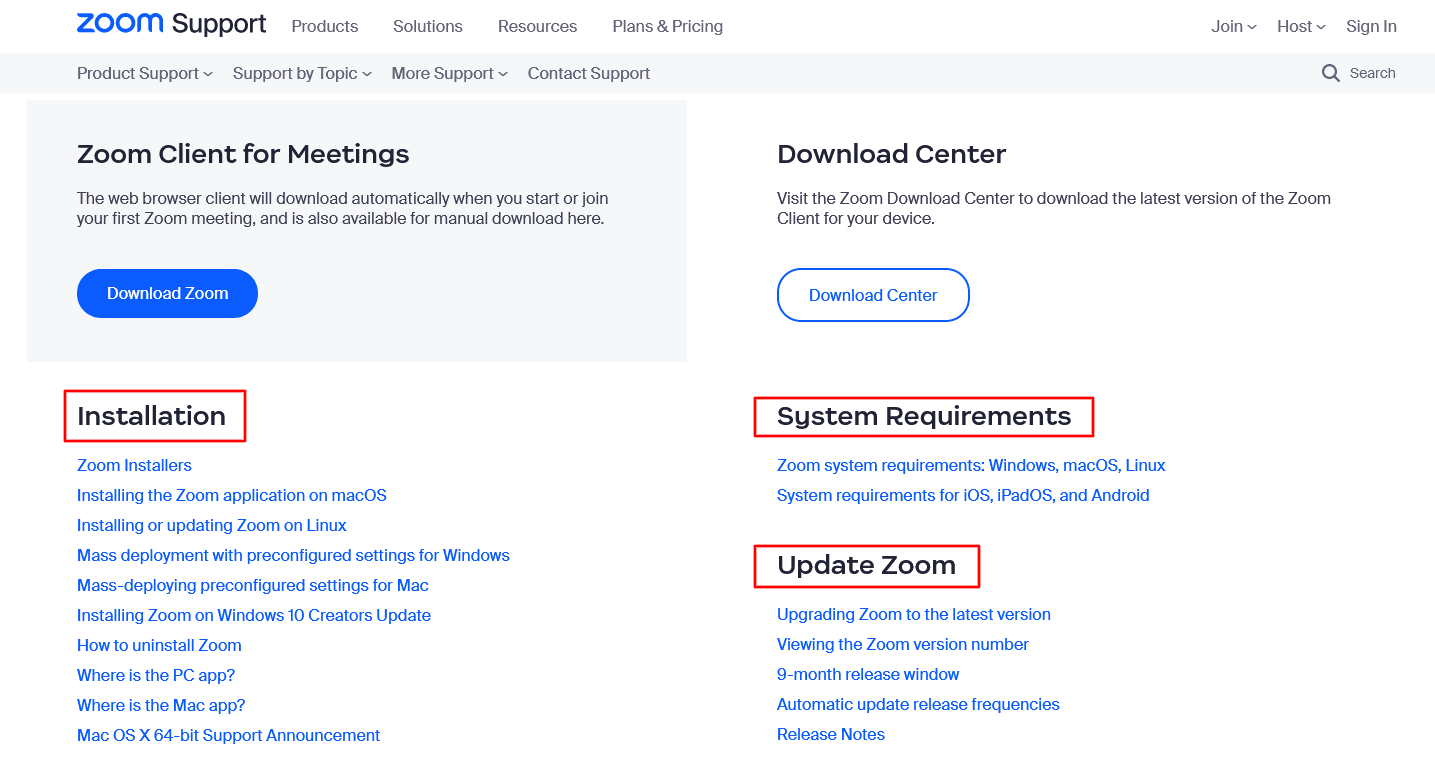
Source: Zoom
That’s only a part of their “Getting started” section for introducing users to their software.
Furthermore, they also have a rich library of user manuals or guides, where the users can learn how to utilize various features and get the most out of the software.
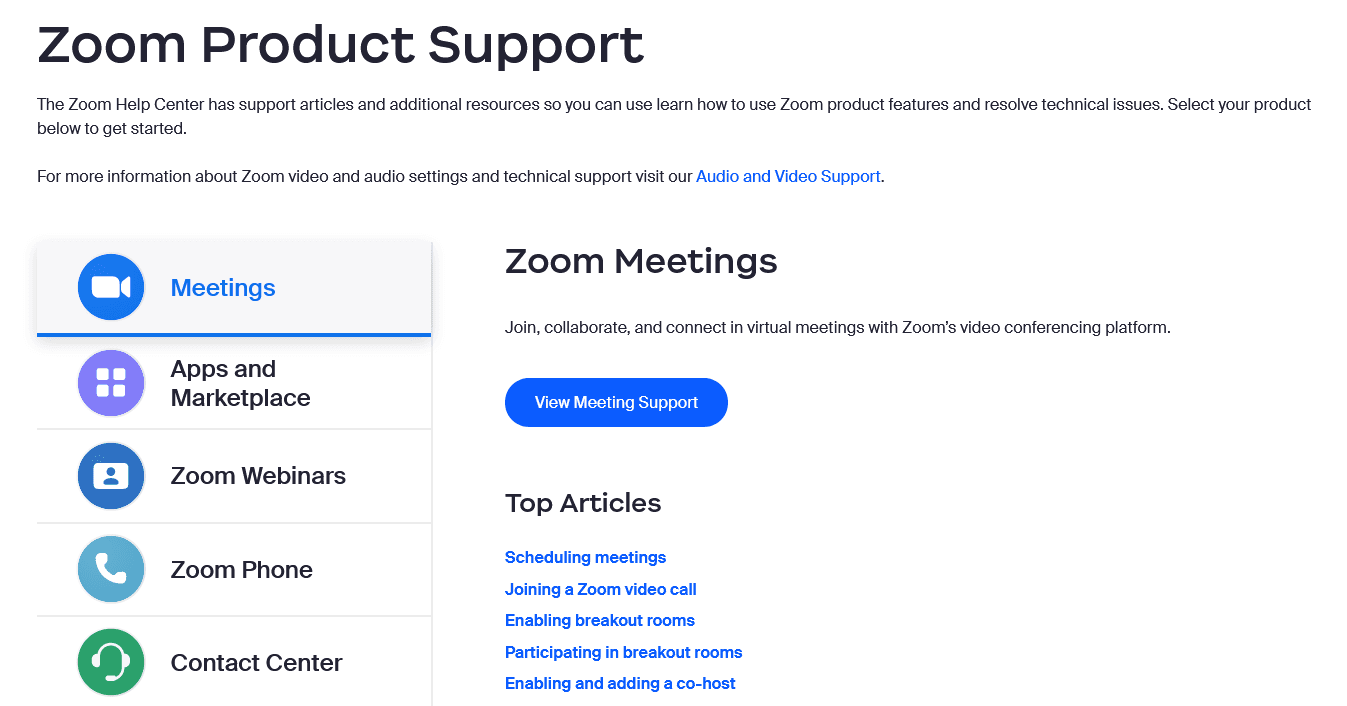
Source: Zoom
And if they run into any problems, Zoom users can always turn to their “Troubleshooting” section.
There they can find solutions to various common issues.
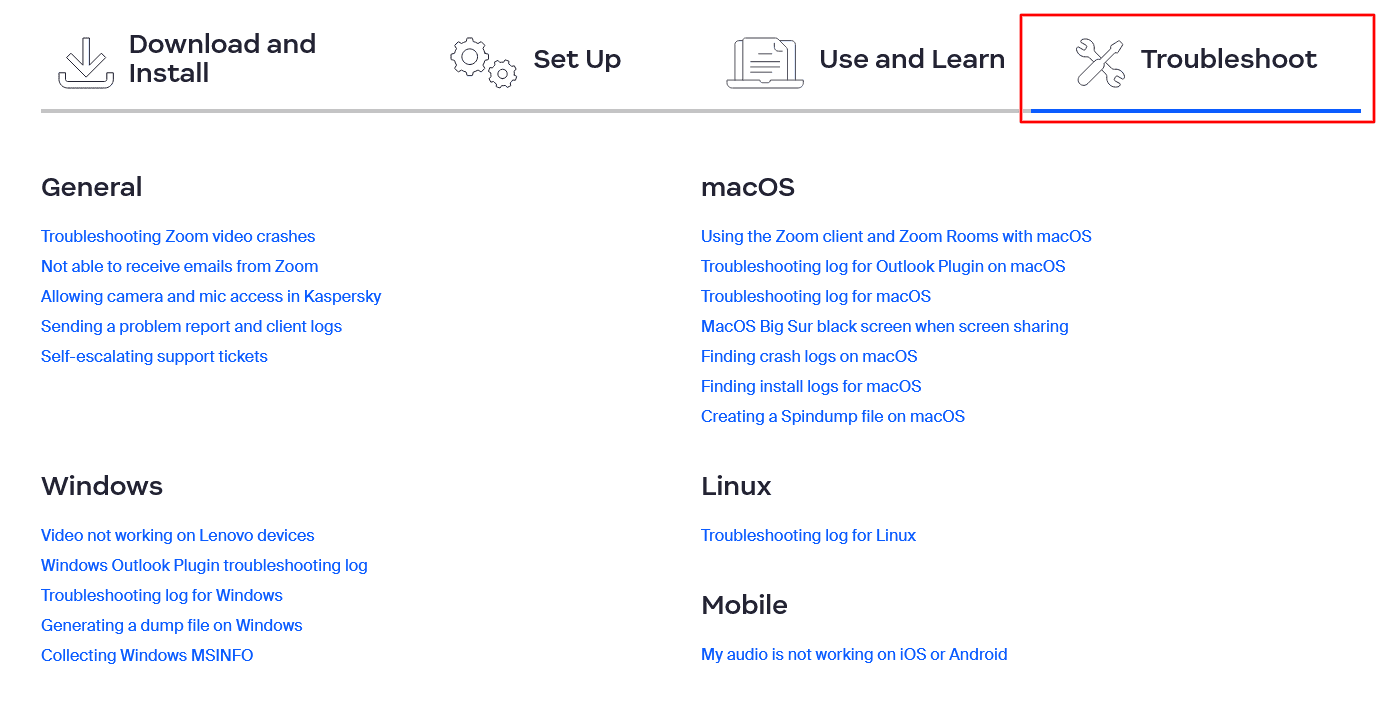
Source: Zoom
As you can see, software end user documentation can be a comprehensive and helpful resource for your customers.
And it should be like that. Why? Let’s dive into the reasons in the next section.
Why Is Software End User Documentation Important
Now that we’ve established what software end user documentation is, it’s time to discuss why it is important.
As you’ll see, there are significant benefits to having great resources of information for the users of your products or services.
Let’s start with the first situation where such resources can prove valuable.
Simplifies User Onboarding
A customer buys a software tool, and then what? Their next step will most likely be to seek out some information about how to get started with using it.
That’s where great documentation can make a big impact.
It should introduce the user to the product, show them the basics, and bring them up to speed on how the software works.
In short, onboarding is a chance for a product to shine and an opportunity to convince the customer that they’ve made the right choice.
Also, the data shows that the onboarding process plays a significant role in customer loyalty.
According to a report by Wyzowl, 86% of consumers say that they’d stay with a business that invests in educating them about the product.
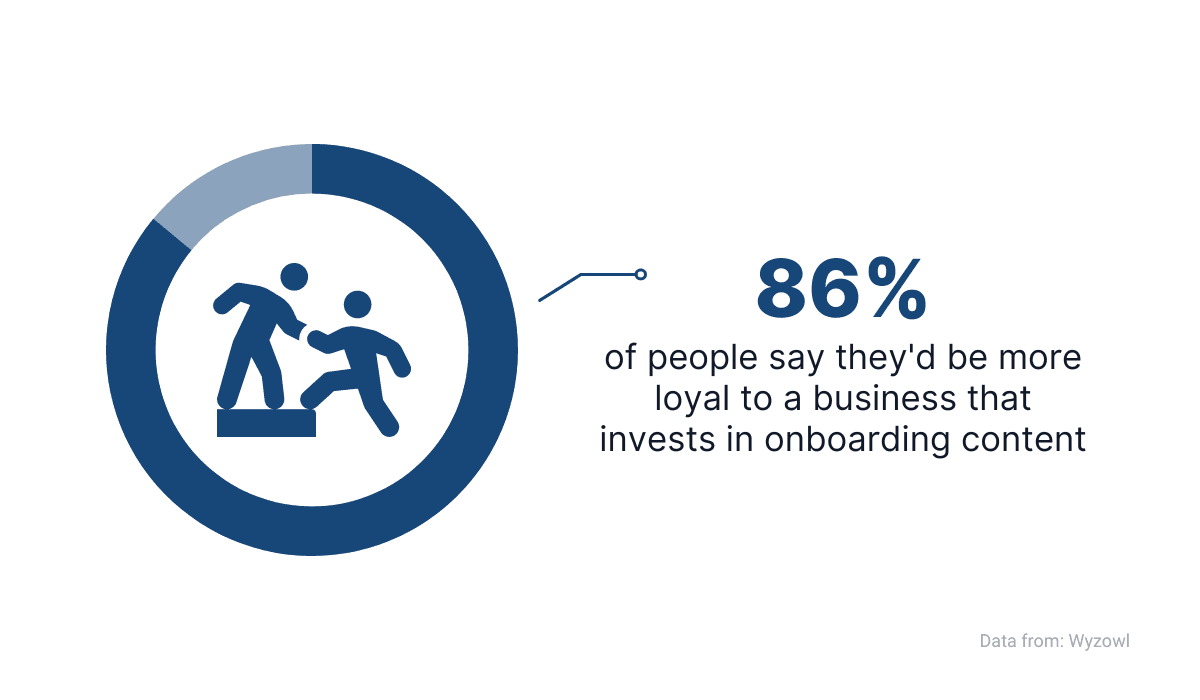
Source: Archbee.com
Therefore, it can be very beneficial for your business to have top-notch user documentation that gradually introduces a customer to your product.
Trello is a great example of a company that understands the importance of user onboarding.
Their onboarding guide is organized as a nine-step process, as you can see below.
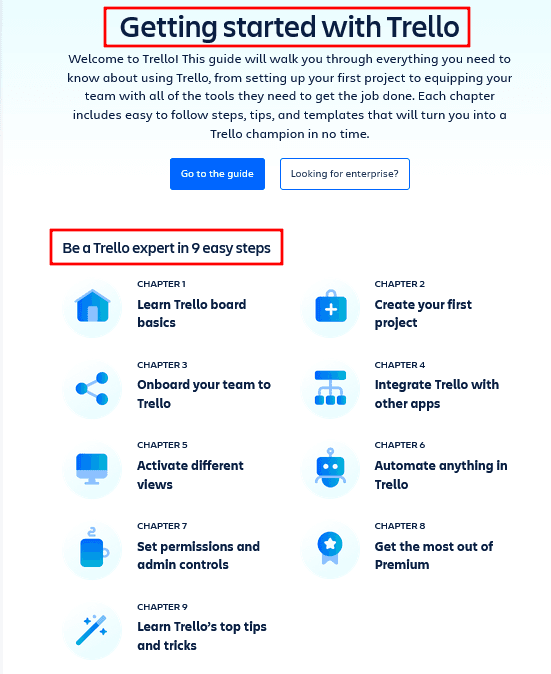
Source: Trello
They start by introducing the customers to boards, creating projects, and gradually moving to more advanced features.
Even in the first chapter about learning about the Trello board, they take it step-by-step and parse that topic into smaller sections.
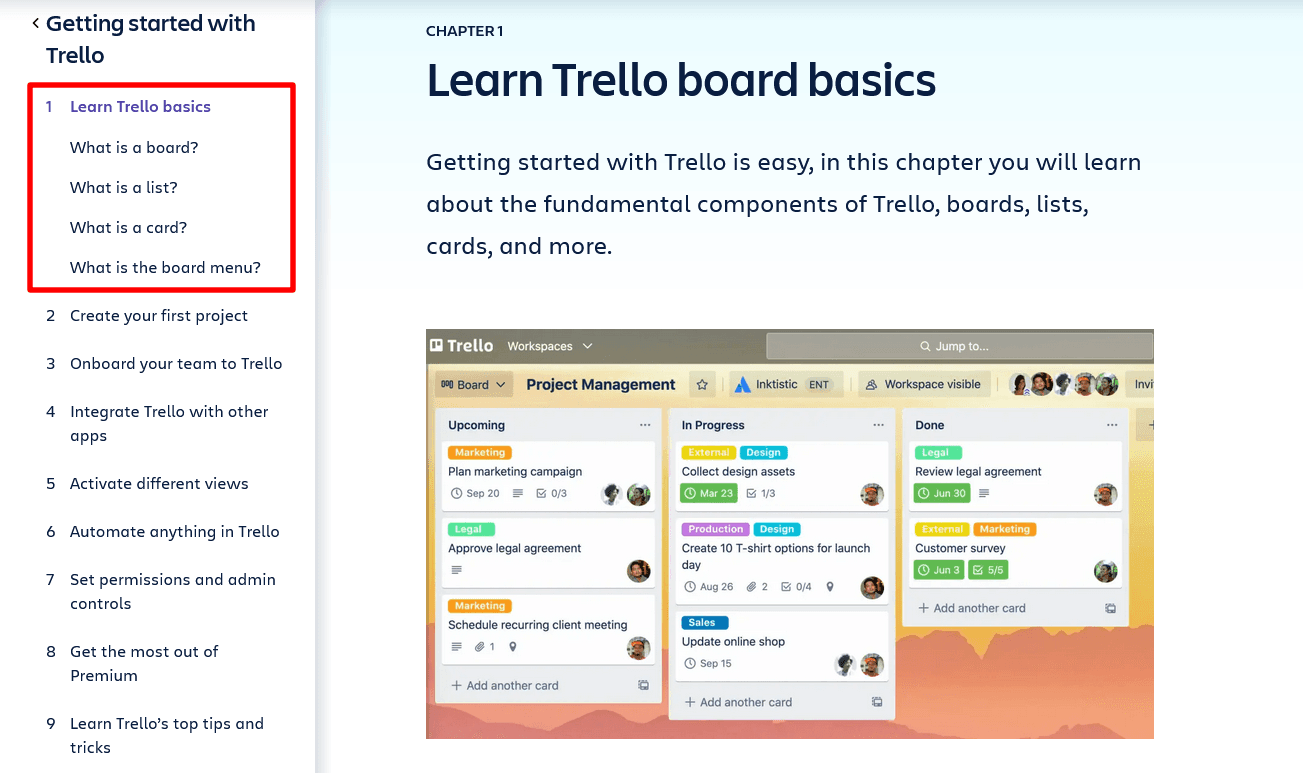
Source: Trello
The writers don’t assume that the user knows anything about their product and instead go on to explain every detail through text or images.
A patient approach like that can simplify user onboarding and encourage the users to stay with the product.
Improves Software Adoption
After the initial onboarding phase, some of the users will keep using the software, and some will decide that it’s not for them.
And that’s perfectly normal. Regardless of your product or service, you can’t expect you’ll keep every customer in the long run.
According to Userpilot, there’s no universal churn rate for SaaS businesses you should aim for, but most small businesses regard an annual churn rate of 5-7% as something to be expected.
However, having high-quality end user documentation can help in keeping more customers.
Simply put, with comprehensive and easy-to-use knowledge resources, you improve the chance that the users will adopt your software and become comfortable using it.
For that reason, it’s important for your documentation to be as detailed as possible.
For example, Unleashed, an inventory management software, has a huge amount of user documentation spread over 12 main categories.
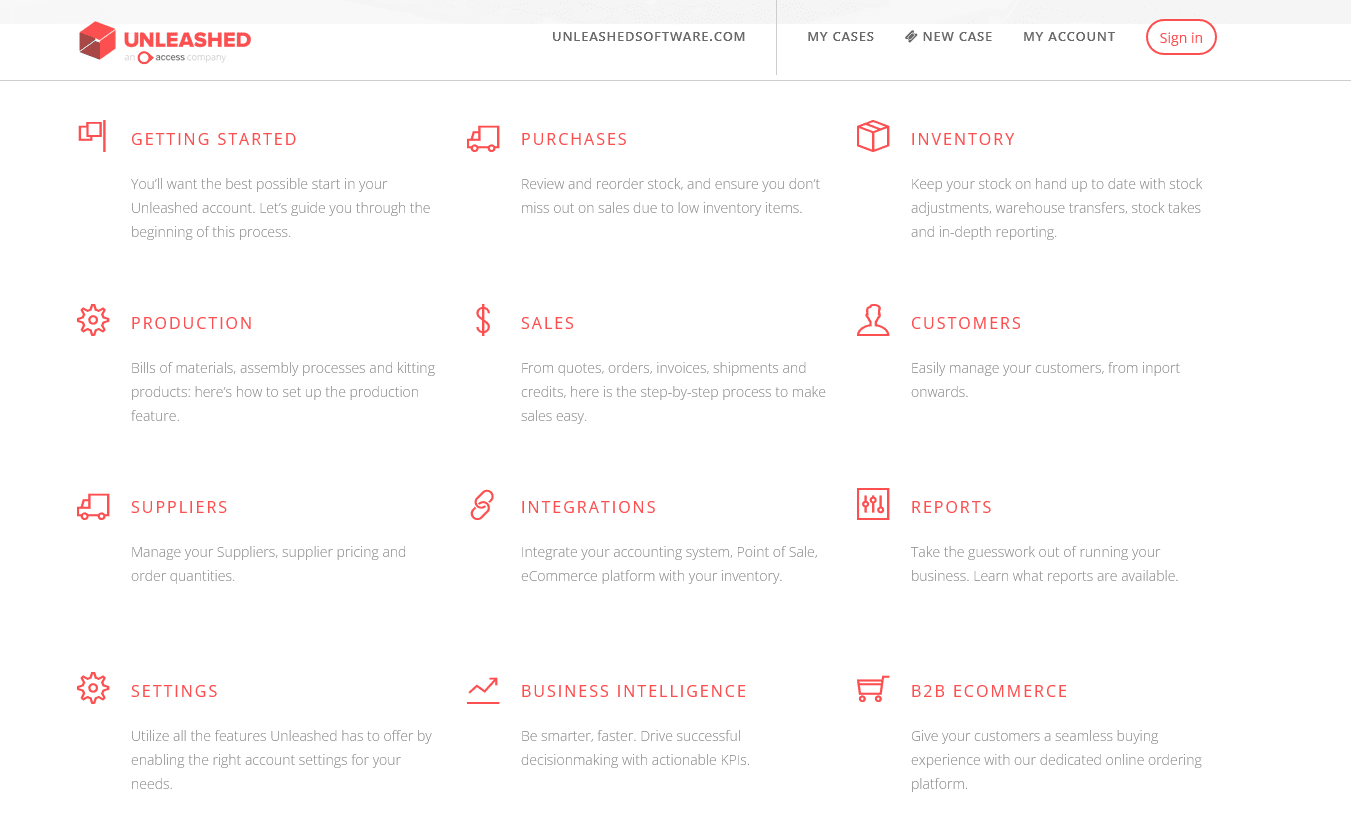
Source: Unleashed
When you open one of them, you can see how much information it contains.
For instance, there are eight subcategories in the “Sales” category:
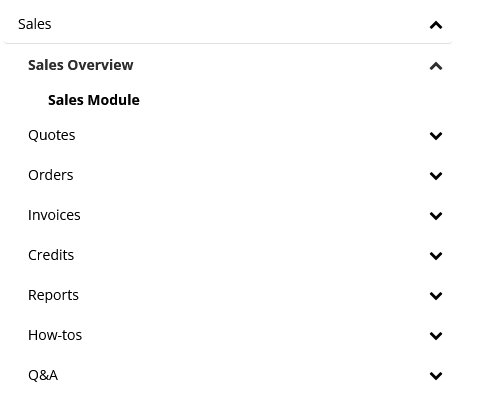
Source: Unleashed
Furthermore, those subcategories contain dozens of help articles.
Just in the “How-tos”, you can count 22 of them. Below, you can see some of the topics they cover.
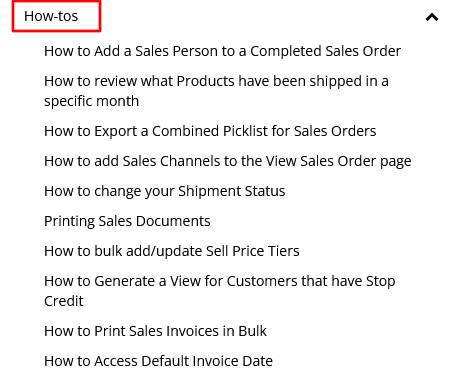
Source: Unleashed
Does having comprehensive end user documentation like Unleashed guarantee improved software adoption?
No, because of the simple fact that user documentation isn’t the only thing that can attract or deter a customer.
However, supplying a resource like that, which provides so many answers they need, undoubtedly helps customers become more proficient in using the software.
Encourages Self-Service
When you create software end user documentation, you encourage customers to learn about your software and solve issues on their own.
And when they can do that thanks to your resources, that’s a very positive element in their user experience.
According to data from Harvard Business Review, a majority of customers prefer self-service options like documentation instead of contacting customer support.
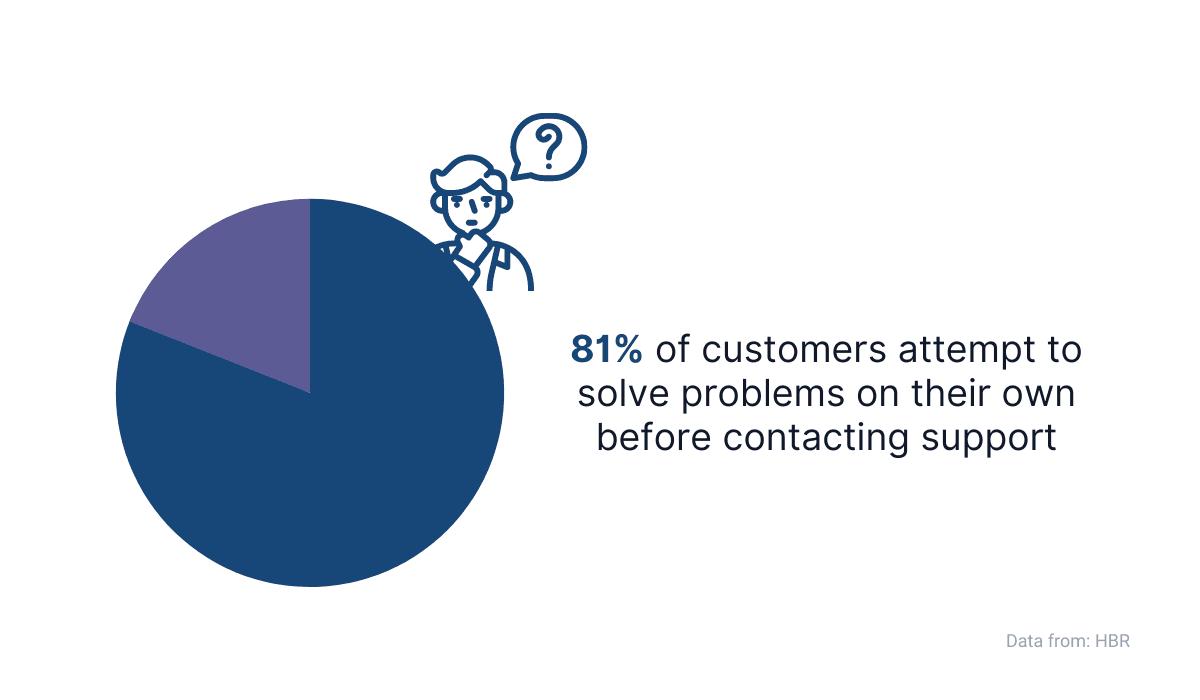
Source: Archbee.com
Therefore, by investing effort in creating useful resources, you give your customers what they want—a way to independently discover what your product can do and how to use it.
Whether it’s an onboarding guide, a how-to manual, or any other type of user documentation we mentioned, they all encourage self-service.
However, having a FAQ section can be particularly useful because, as its name suggests, the users can find the most common questions and solutions there.
For instance, Amazon Web Services has an especially rich FAQ section with many categories and hundreds of answered questions.
Take a look at the “Machine Learning” section below. It has ten FAQ subsections, each with questions and answers for users to learn from.
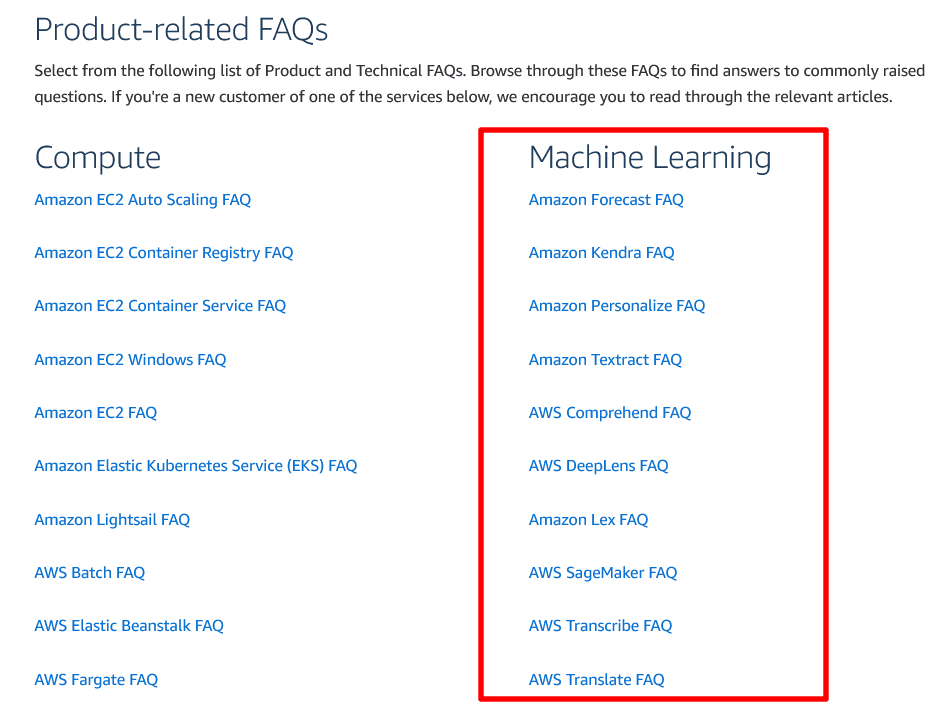
Source: Amazon Web Services
A detailed resource like that saves the users from having to contact customer support and instead encourages them to find answers on their own.
However, sometimes they’ll turn to support regardless. In the next section, let’s examine what role end user documentation plays in those situations.
Unburdens the Customer Support Team
Even the best end user documentation won’t eliminate the need for a customer support team. However, it can save them a lot of precious time and effort.
And your customer support team is there for a reason. However, the reason should be to help customers with complex and time-sensitive issues, not to answer basic questions about the product.
That’s where user documentation can help.
For example, according to The State of Customer Service 2022 report from HubSpot, customers have higher expectations from customer support than they used to be, and are more informed every year.
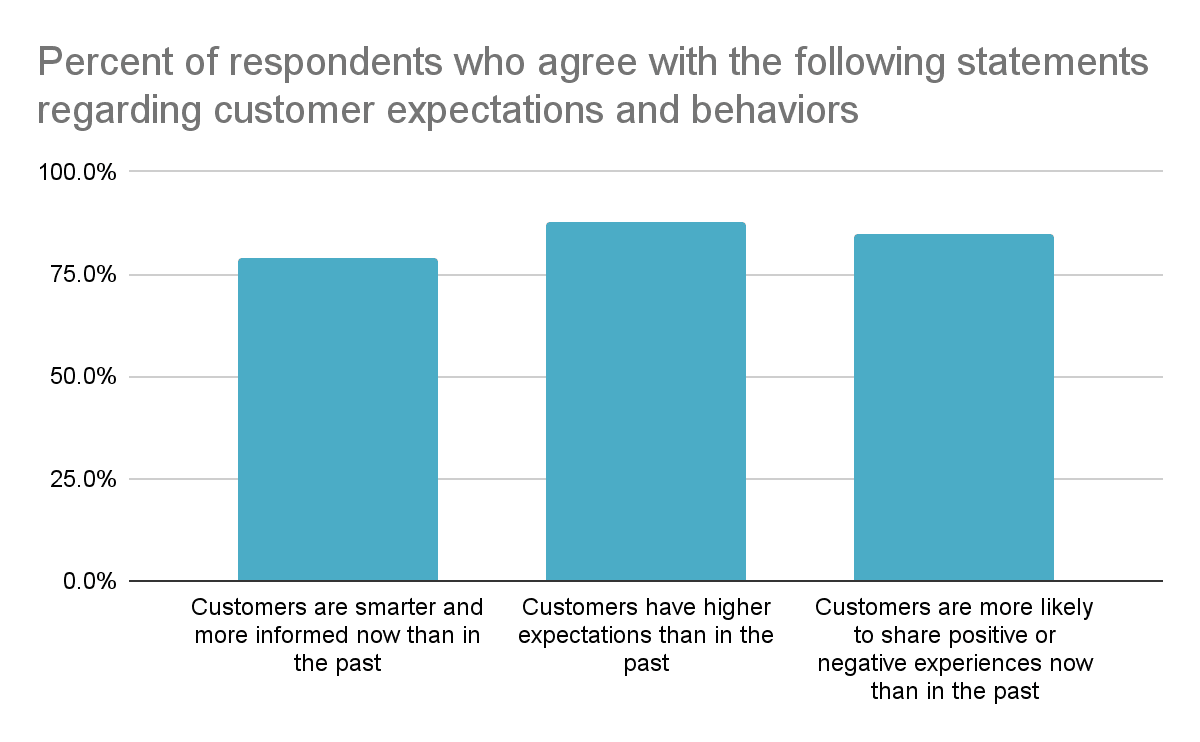
Source: HubSpot
That means the customer support job is more demanding, and the team has to be ready to fulfill those demands more than ever.
Having helpful, clear, and useful user documentation can allow them more time for truly serious issues because the customer has a great resource they can use independently.
You can even point the users to the relevant resources within your documentation when they’ve already attempted to contact your customer support and unburden your team some more.
For instance, HelpCrunch has links on their live chat window that lead to part of their documentation.
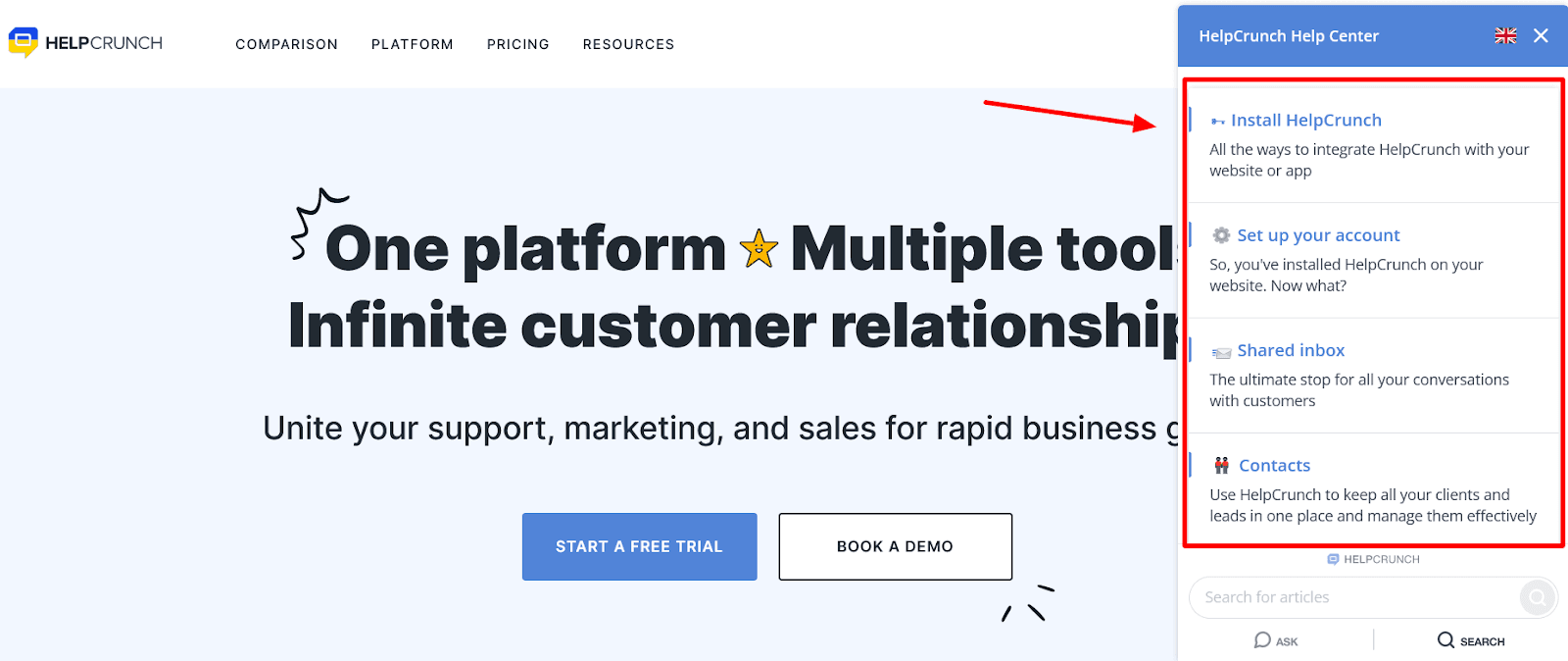
Source: HelpCrunch
That way, the customers who might have gone straight to customer support with simple questions get reminded that there are resources that can provide them with the information they need.
At the same time, your customer support team has the time to deal with more pressing issues.
How to Create Software End User Documentation
As we’ve discussed so far, end user documentation for your software has a lot of benefits.
However, documentation that can bring those benefits isn’t created haphazardly. You should pay attention to specific elements and processes if you want the best results.
Let’s start with the first step.
Begin With a Plan
To create high-quality user documentation, first, you need to begin with a plan.
Although you probably know your product inside and out, that doesn’t mean you can write about it without any preparation.
For documentation to be truly helpful to your customers, you need to decide on a number of important factors:
- Goals of the documentation
- Target audience
- Document outline
- Persons responsible for documentation
- Formatting
That list can be much longer, but you get the point—great documentation requires careful planning.
Each of those bullet points in the list above deserves its own section, but let’s here look at the example of what a good outline looks like.
An outline includes what categories and subcategories you will fit in your documentation or a single document. When you have it, you can create a useful element like a table of contents.
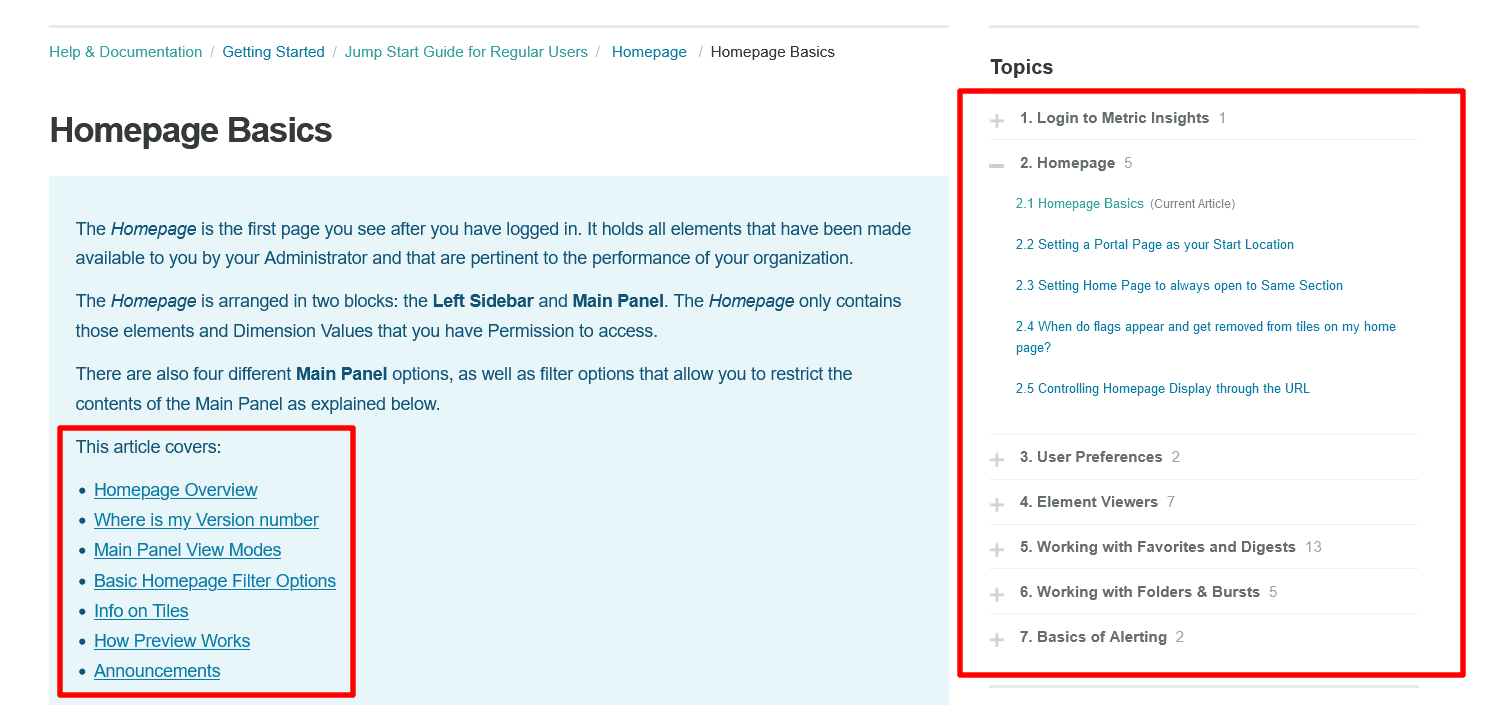
Source: Metric Insights
As you can see above, Metric Insights planned the contents of their documentation and presented them on the right-hand side.
In addition to that, they also outlined the contents of the specific article.
All of that makes it easier for customers to find the information they need, and elements like that are what you need to think about if you want to create great documentation.
Choose the Right Documentation Tool
The days when your users could access your documentation in the form of a booklet or a CD are long gone.
Today, such documentation is kept online, and for that, you need an appropriate tool.
And that doesn’t mean writing documentation in Word or publishing it on your website as one PDF document.
If you want your documentation to be as helpful as it can be, you need a platform where you can create it, collaborate on it with other teammates, make it searchable, etc.
Luckily, documentation platforms like Archbee are perfectly suited for all that.
For example, Archbee has a library of templates to make writing specific types of documents quicker and easier.
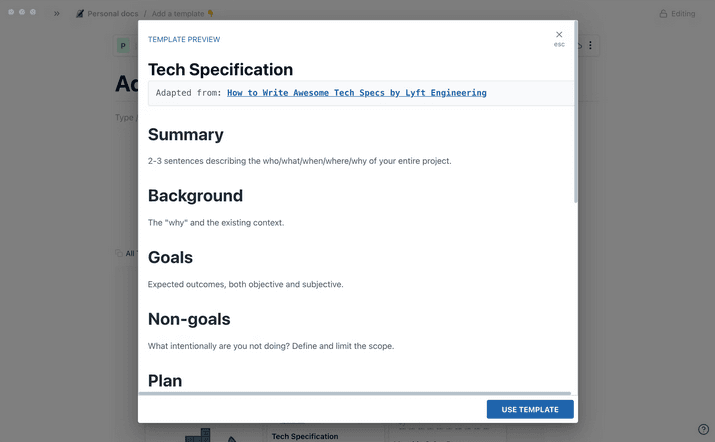
Source: docs.archbee.com
While writing a document, you can invite your teammates to collaborate.
You can tag them, and they’ll get a notification. Then, they can read, edit, comment, and create a document with you, whether you’re online at that particular time or not.
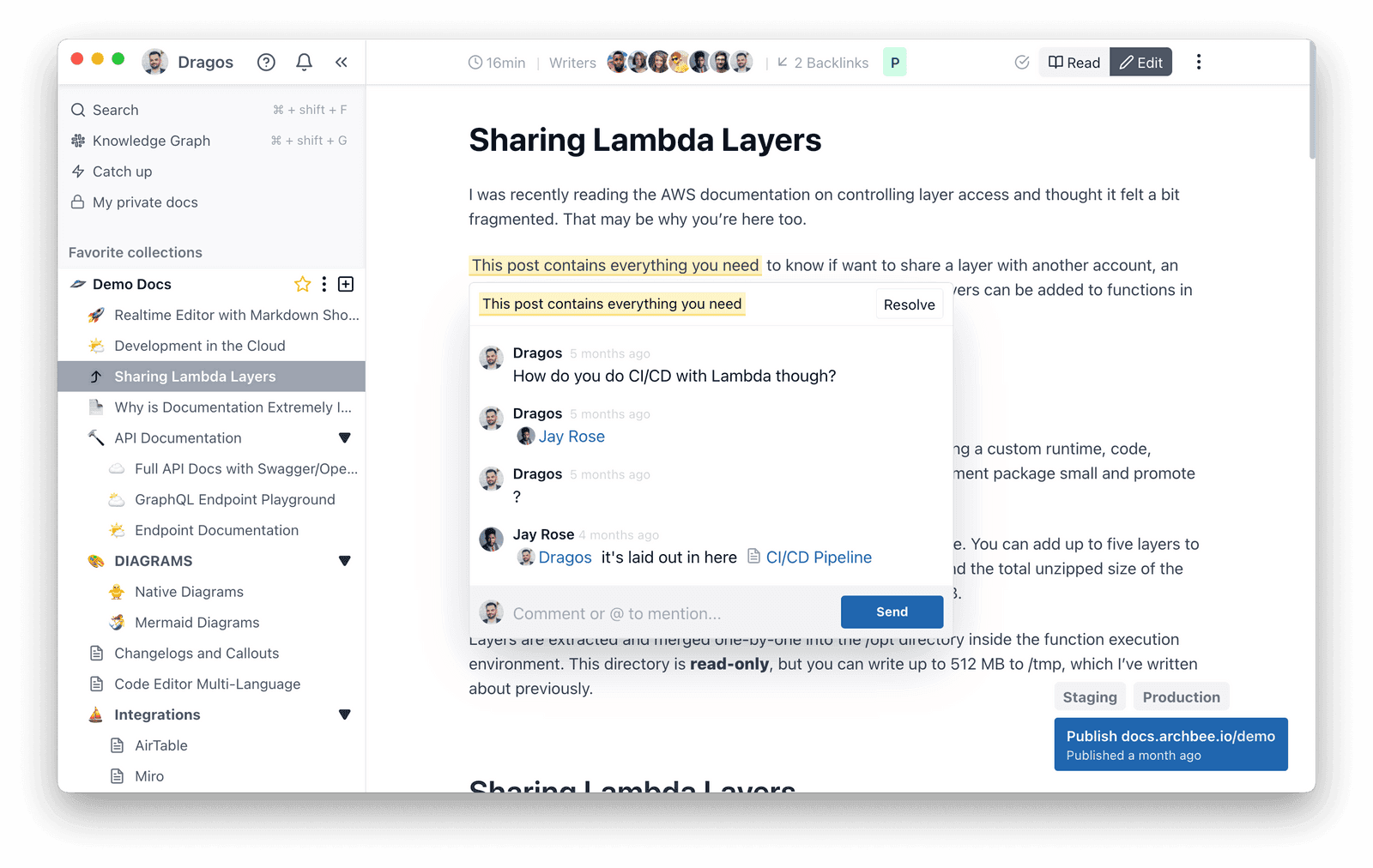
Source: Archbee.com
There are many more features that make Archbee an excellent choice for a documentation platform.
The point is that a tool created specifically for user documentation will make producing and maintaining it a much more manageable task, so don’t miss out on its advantages.
Start Writing the End User Documentation
After creating a plan for your end user documentation and choosing the tool you prefer, it’s finally time to start writing.
However, you shouldn’t just put words down on a page and hope for the best.
The documentation you’re writing is intended for users, so it’s imperative that they can follow and understand it easily.
That means you should write in clear and simple terms, avoiding unnecessary industry jargon and convoluted sentences.
Slack, a popular communication tool, commits to writing in plain language throughout its user documentation.
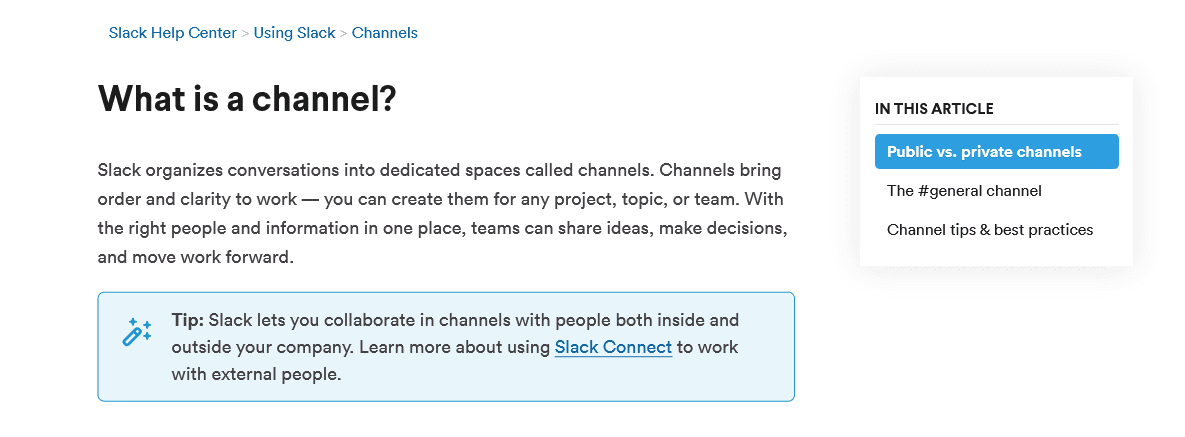
Source: Slack
They explain the individual features like channels in everyday language that users from every walk of life can comprehend.
Remember that most customers don’t have the technical knowledge you do.
The fact that you know so much about the product that you can write guides, FAQs, or various instructions makes you an expert.
That also gives you the responsibility to make sure you convey all that knowledge in a way that is understandable to a broad audience.
Keep Your End User Documentation Updated
Software is not a type of product that stays the same for long. Even simple software products go through updates and changes to keep up with customers’ demands.
The same should happen with user documentation, too. As this Twitter user below puts it, net updating harms the whole user experience.

Source: Twitter
Let’s say that your software gets a few new and exciting features. Of course, your customers would want to use them, but they might not know how.
If you don’t have documentation ready for situations like that, they might flood your customer support with questions, which we already discussed isn’t a good sign.
And, if the documentation keeps falling behind more and more, your customers might just give up on your product and go to a competitor, and you certainly don’t want that.
Therefore, keep your user documentation updated along with the software.
It’s wise to let your users know that the resource is relevant, like Atlassian does in their documentation, with a simple notification at the bottom of the page.
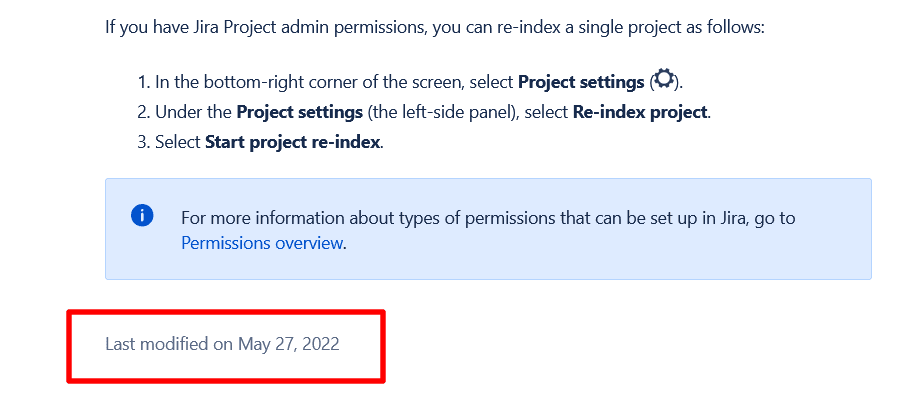
Source: Atlassian
Updating your documentation is the only way to keep it accurate and relevant to the software product you offer.
Otherwise, there’s not much use to it at all.
Track How User Documentation Is Performing
Knowing how your customers use the software documentation they have at their disposal can help you make it better.
For instance, with Google Analytics, you can see what help articles are opened the most, as well as which are the least popular.
You can see how to do that in the video by Kyle Akerman, a web analyst and Google Analytics specialist.
Source: Kyle Akerman on YouTube
That can show you which features of your software your users are interested in the most.
However, it can also indicate that they encounter more problems using certain aspects of your software than others.
How you interpret those results is a topic on its own, but those metrics can undoubtedly be valuable.
Another simple way to see how your documentation performs is by gathering user feedback.
You can do that with a straightforward method—asking them if they find the provided information useful in the document itself, like Spotify does.
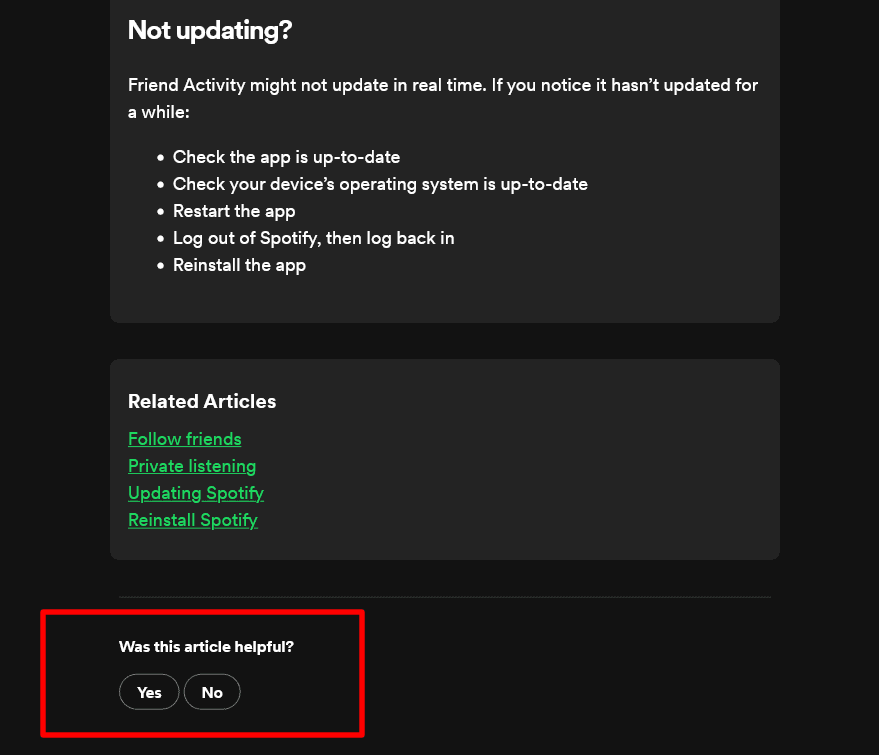
Source: Spotify
Collecting that information can show you if your articles are helpful or if you need to start thinking about improving them.
To summarize, tracking the performance of your documentation can help you create better documents and focus on the areas that need your attention the most.
Conclusion
Software end user documentation is an integral part of a good user experience.
And it’s necessary because all software products are complex to some degree.
User documentation helps customers to start using them and to become more and more familiar with their features.
After all, satisfied customers who use software products successfully are your goal.
We hope that this article has shown you why and how you could achieve that by creating high-quality documentation.
FAQ
Frequently Asked Questions
Software end user documentation is the plain‑language guidance that helps customers get value from your product—from first install to everyday tasks and troubleshooting. It’s written for non‑technical users and delivered where they need it (your help center, in‑app help, emails, videos).
What it typically includes:
- Getting started/onboarding
- User guides and feature deep dives
- Task‑based how‑tos and checklists
- Troubleshooting steps and FAQs
- Release notes/what’s new and known issues
- Concepts, glossary, and system requirements
Common formats:
- Articles with step‑by‑step instructions and screenshots
- Short videos or GIFs
- Interactive walkthroughs or in‑app tooltips
The goal: enable self‑service, reduce support friction, and build user confidence and adoption.
